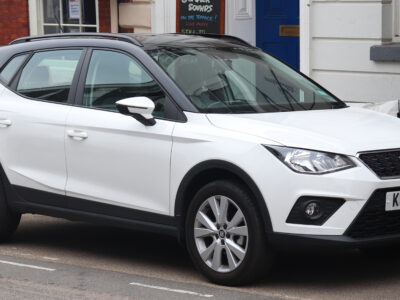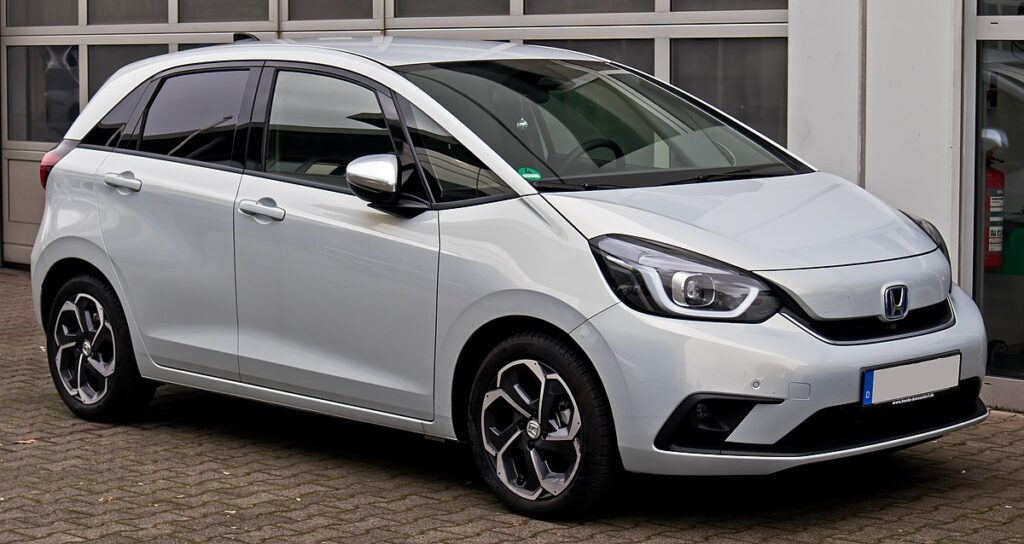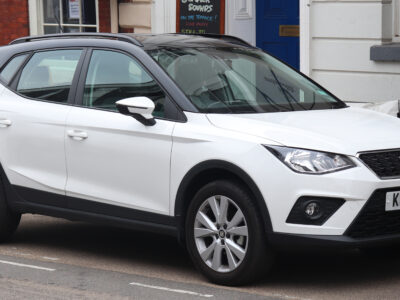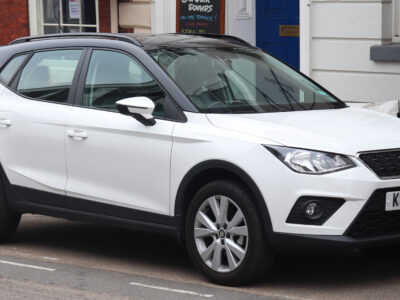
Honda Jazz Engine Size: Everything You Need to Know

The Honda Jazz is a clever little car that punches well above its weight. Whether we’re talking about its fuel efficiency, versatility, or sheer practicality, this compact hatchback has long been one of the most respected names in its class. But what about what’s under the bonnet? The Honda Jazz engine size is where much of its charm—and its efficiency—comes from.
In this in-depth guide, we’ll peel back the layers of the Jazz’s engineering to explore every detail about its engine sizes, performance, fuel economy, and the differences across generations. Let’s dive in.
- The Evolution of the Honda Jazz Engine
- Second Generation (2008–2014)
- Third Generation (2015–2020)
- Fourth Generation (2020–Present)
- Comparing Honda Jazz Engine Sizes by Generation
- Why Engine Size Matters in the Honda Jazz
- The Best Honda Jazz Engine for You
- Fuel Efficiency and Real-World Numbers
- Reliability of Honda Jazz Engines
- Engine Maintenance Tips
- The Future of Honda Jazz Engines
- Pros and Cons of Each Engine Size
- Our Verdict – The Smart Heart of the Jazz
- FAQs
The Evolution of the Honda Jazz Engine
The Honda Jazz (known as the Honda Fit in some markets) has seen remarkable evolution since its debut in 2001. Over its four generations, the Jazz has worn many engine hats—from zippy petrol units to sophisticated hybrid powertrains.
First Generation (2001–2008)
The first-generation Jazz came with two small but energetic petrol engines:
- 1.2-litre i-DSI (78 hp)
- 1.4-litre i-DSI / VTEC (82–100 hp)
These engines were designed for maximum economy rather than raw power, using Honda’s “Intelligent Dual and Sequential Ignition” (i-DSI) technology. The twin-spark system improved combustion efficiency, resulting in lower fuel consumption.
Key takeaway: The 1.4-litre model offered the best mix of performance and economy, capable of around 47 mpg (UK).
Second Generation (2008–2014)
Engine Options
Honda refined the Jazz formula with better engines and smoother transmission options. You could choose between:
- 1.2-litre i-VTEC (90 hp)
- 1.4-litre i-VTEC (100 hp)
The i-VTEC technology gave these engines more pep, especially at higher revs, without compromising fuel economy. They were light, efficient, and ideal for city driving—yet comfortable on longer journeys.
Performance Snapshot:
| Engine | Power | 0–62 mph | Top Speed | Combined MPG |
|---|---|---|---|---|
| 1.2 i-VTEC | 90 hp | 12.5 sec | 109 mph | 50 mpg |
| 1.4 i-VTEC | 100 hp | 11.5 sec | 113 mph | 49 mpg |
Third Generation (2015–2020)
Refinement Meets Efficiency
By the third generation, Honda Jazz owners expected refinement and economy in one neat package. Honda responded with:
You may be interested in reading How to Replace a Honda Jazz Battery (UK Guide)
How to Replace a Honda Jazz Battery (UK Guide)- 1.3-litre i-VTEC (102 hp)
- 1.5-litre i-VTEC (130 hp)
The 1.3-litre engine was the bread-and-butter choice—efficient, quiet, and reliable. Meanwhile, the 1.5-litre i-VTEC, introduced in the “Sport” trim, added zest for those craving a livelier drive.
Fuel Economy Highlights:
- 1.3 i-VTEC (manual): Up to 56 mpg
- 1.3 i-VTEC (CVT): Around 52 mpg
- 1.5 i-VTEC Sport: 128 g/km CO₂, 0–62 mph in just 8.7 seconds
Fourth Generation (2020–Present)
The Era of Hybrid Power
This is where the Honda Jazz engine size took a technological leap. Instead of choosing between multiple petrol engines, every new Jazz now features a 1.5-litre e:HEV hybrid system.
1.5-Litre e:HEV Hybrid Powertrain
This advanced setup combines:
- 1.5-litre petrol engine
- Two electric motors
- Lithium-ion battery
- eCVT automatic gearbox
The system delivers 109 hp and can run in three driving modes:
- EV Drive: Fully electric for short distances
- Hybrid Drive: Engine generates electricity for the motors
- Engine Drive: Direct power from the petrol engine
The result? Up to 62.8 mpg (UK) combined, with emissions as low as 102 g/km CO₂.
Comparing Honda Jazz Engine Sizes by Generation
| Generation | Years | Engine Options | Power Range | Type |
|---|---|---|---|---|
| 1st | 2001–2008 | 1.2L, 1.4L | 78–100 hp | Petrol |
| 2nd | 2008–2014 | 1.2L, 1.4L | 90–100 hp | Petrol |
| 3rd | 2015–2020 | 1.3L, 1.5L | 102–130 hp | Petrol |
| 4th | 2020–Present | 1.5L e:HEV | 109 hp | Hybrid |
Why Engine Size Matters in the Honda Jazz
Engine size impacts nearly every part of your driving experience—from how the car accelerates to how often you visit the petrol station.
Smaller Engines = Lower Costs
- Cheaper insurance
- Lower road tax (especially older 1.2L models)
- Improved fuel economy
Larger Engines = More Power
- Sharper acceleration
- Better motorway performance
- Ideal for carrying passengers or luggage on long trips
The Best Honda Jazz Engine for You
Choosing the right engine depends on how—and where—you drive.
| Driving Style | Recommended Engine | Why |
|---|---|---|
| City Driving | 1.2L / 1.3L | Efficient, easy to park, smooth automatic option |
| Mixed Driving | 1.4L / 1.5L | More flexibility for longer trips |
| Eco-Conscious | 1.5L e:HEV | Outstanding hybrid efficiency |
| Performance | 1.5L i-VTEC Sport | Responsive and fun |
Fuel Efficiency and Real-World Numbers
The Jazz has always been a leader in real-world fuel efficiency. Here’s what you can expect:
Real MPG Estimates (UK)
- 1.2L (2008 model): 47–52 mpg
- 1.3L (2017 model): 53–56 mpg
- 1.5L i-VTEC (Sport): 45–49 mpg
- 1.5L e:HEV Hybrid: 60–63 mpg
Even with the added hybrid tech, Honda’s compact engine philosophy keeps running costs incredibly low.
You may be interested in reading How to Replace a Honda Jazz Battery (UK Guide)
How to Replace a Honda Jazz Battery (UK Guide) Honda Jazz Fuel Tank Capacity: Everything You Need to Know
Honda Jazz Fuel Tank Capacity: Everything You Need to KnowReliability of Honda Jazz Engines
If there’s one thing Honda is known for, it’s reliability. Jazz engines have a reputation for going the distance.
Common Strengths
- Chain-driven engines (no costly timing belt changes)
- Simple, naturally aspirated designs (fewer failure points)
- Consistent oil and coolant maintenance = long lifespan
It’s not unusual to see Jazz models surpassing 200,000 miles with regular servicing.
Engine Maintenance Tips
Keeping your Jazz engine running smoothly doesn’t require wizardry—just consistency.
Essential Maintenance Schedule
- Oil change: Every 12,000 miles or 12 months
- Air filter: Every 20,000 miles
- Spark plugs: Every 60,000 miles
- Coolant: Every 5 years
Bonus Tips
- Use genuine Honda oil filters.
- Keep your CVT fluid fresh if you own an automatic.
- Don’t ignore early signs of misfiring or rough idling.
The Future of Honda Jazz Engines
Honda’s roadmap is all about electrification. By 2030, all new Honda models in Europe will be either hybrid or electric. That means the Jazz’s current 1.5L e:HEV engine might be the last traditional petrol unit in its lineup.
Upcoming Innovations
- More efficient battery systems
- Stronger regenerative braking
- Next-gen hybrid systems with enhanced EV range
Pros and Cons of Each Engine Size
| Engine | Pros | Cons |
|---|---|---|
| 1.2L | Great economy, low insurance | Slower on highways |
| 1.3L | Balanced, smooth | Lacks punch for overtaking |
| 1.4L | Good all-rounder | Slightly thirstier |
| 1.5L Petrol | Fun, peppy | Higher tax/insurance |
| 1.5L Hybrid | Superb MPG, quiet drive | Pricier upfront |
Our Verdict – The Smart Heart of the Jazz
The Honda Jazz engine size has always reflected Honda’s philosophy: do more with less. Whether you’re driving an early 1.2-litre city cruiser or the cutting-edge 1.5-litre hybrid, every Jazz engine shares the same DNA—efficiency, durability, and intelligence.
If you value fuel economy and low running costs, the hybrid e:HEV is unbeatable. But if you love simplicity and mechanical purity, those older i-VTEC engines still make a compelling case. The Jazz isn’t just about getting from A to B—it’s about doing it smartly, quietly, and dependably.
FAQs
1. What is the engine size of the latest Honda Jazz?
The newest Honda Jazz comes with a 1.5-litre e:HEV hybrid engine.
2. Which Honda Jazz engine is the most fuel-efficient?
The 1.5-litre hybrid achieves around 60–63 mpg in real-world conditions.
3. Does the Honda Jazz have a timing belt or chain?
All Honda Jazz engines use a timing chain, which typically lasts the life of the engine.
4. What’s the most powerful engine available?
The 1.5-litre i-VTEC in the Jazz Sport (130 hp) is the most powerful petrol engine variant.
You may be interested in reading How to Replace a Honda Jazz Battery (UK Guide)
How to Replace a Honda Jazz Battery (UK Guide) Honda Jazz Fuel Tank Capacity: Everything You Need to Know
Honda Jazz Fuel Tank Capacity: Everything You Need to Know Honda Jazz Oil Type: Complete Guide to Choosing the Right Engine Oil
Honda Jazz Oil Type: Complete Guide to Choosing the Right Engine Oil5. How long do Honda Jazz engines last?
With regular maintenance, it’s not uncommon for a Jazz engine to exceed 200,000 miles.
If you want to know other articles similar to Honda Jazz Engine Size: Everything You Need to Know you can visit the category Service and Parts.
Deja una respuesta






More content of your interest